Ísafjörður translates to the fjord of ice or ice fjord and is the largest hamlet in the Westjfords area of Iceland.
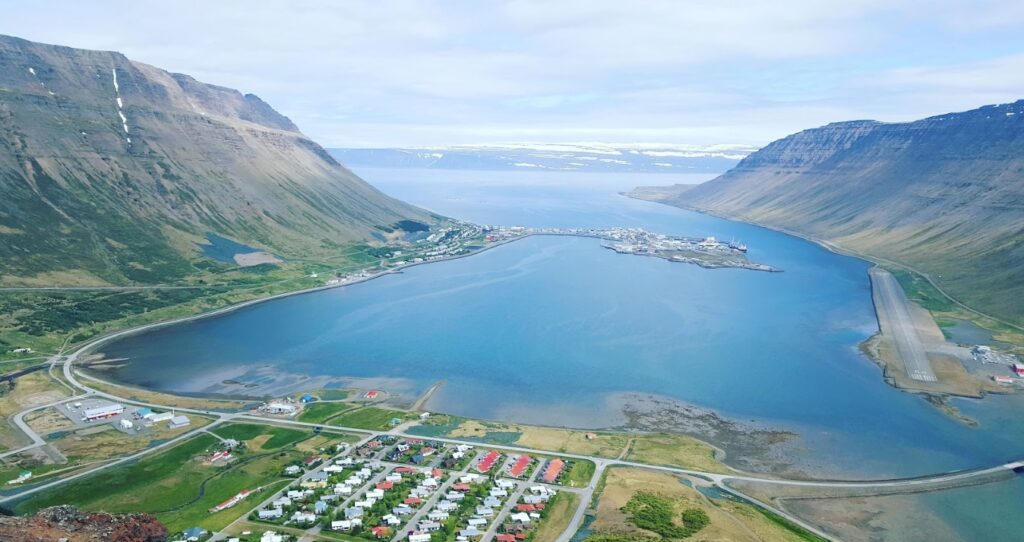
The Westfjords are very mountainous; the coastline is heavily indented by dozens of Fjords surrounded by steep hills. Isafjordur is a tiny town of less than 3000 people and has been the long time center for trade, fishing, and tourism in the region.
The day we arrived it was 4 degrees with a projected max of 6. We stared out of our window to see a wall of black, volcanic rocks topped with a decent layer of snow. We are definitely in Iceland now.




Our trip to Ísafjörður was once again on a cold, grey, overcast day. But as the day progressed the sun did try and peak out every now and then. A tender off the ship and a wander along the rock wall, past the black sand beach and we were almost done. Being a small town it was not exactly an onerous walk to meander through the town and see all of the sights.








Given the cold weather and temperatures here we were quite surprised to see that many of the houses were quite basic and that corrugated iron was so readily used. We were here in summer and were catching maximum temperatures in single digits. So the winter temperatures would be less than pleasant and corrugated iron doesn’t leap out as an overly insulating building material.
While the town was not an onerous walk, there was a lookout at the top of the town that posed a few more challenges. While not an overly long distance, it was all uphill, over uneven, loose volcanic rocks and up an icily cold metal staircase. But once you had made the effort, there was some pretty spectacular panoramic views to be had.



The town of Ísafjörður is surrounded by a rim of flat-topped mountains that surround the fjord. A notable feature is a massive depression – this is Naustahvilft or more commonly known as ‘the troll seat’.
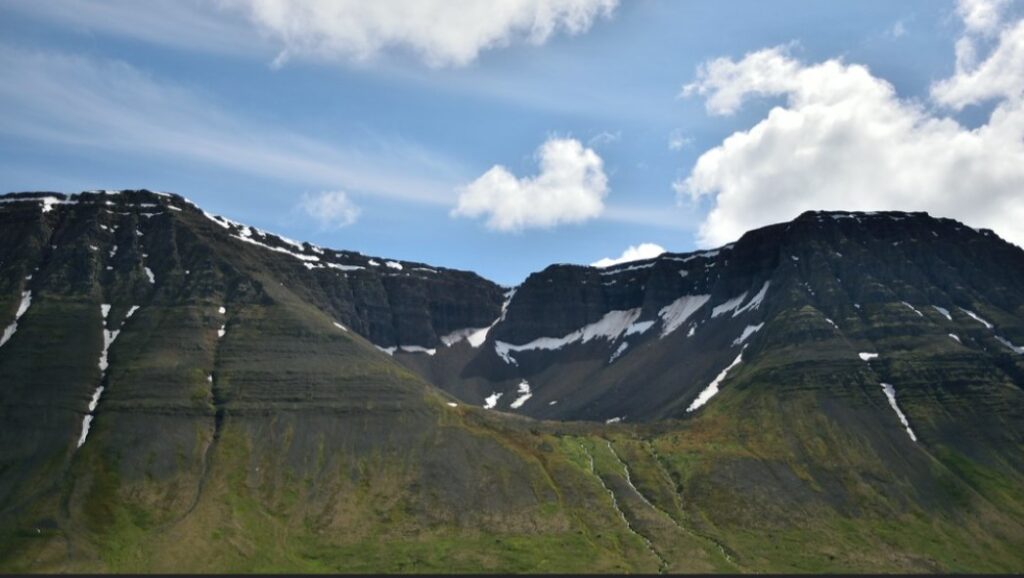
The story goes that a troll was hurrying home before the morning sunlight could turn her to stone. Having run fast and got back early, she sat and rested with her aching feet in the fjord. What was left was the peninsula of Ísafjörður town between her feet, the deep harbour where her feet had been, and the “seat” where her backside had been.
Folktales
Folk tales and stories of elves are very much woven into the fabric of Iceland. They are a big part of what connects the Icelandic people to their land. It is no coincidence that these tales often center around the incredible natural phenomena of Iceland. In turn, the Icelandic people gain a profound connection to the natural world from an early age. These tales nurture a deep respect for nature. And the Icelandic people are fiercely proud of their wild places with a desire to protect and preserve them.
Elves
Stories of elves and the Hidden Folk have been around in Iceland for centuries. Their origins are thought to be from the Bible story of Eve’s dirty children. Preparing for God’s visit to the garden of Eden, Eve washed and cleaned her children. However she didn’t have time to get to them all and tried to hide the unwashed ones. God found out and cursed them to be forever invisible to man.
The Hidden Folk live in rocks and hills and Icelanders are very respectful of their homes, often going as far as curving roads around rocks that are believed to be Elf houses.
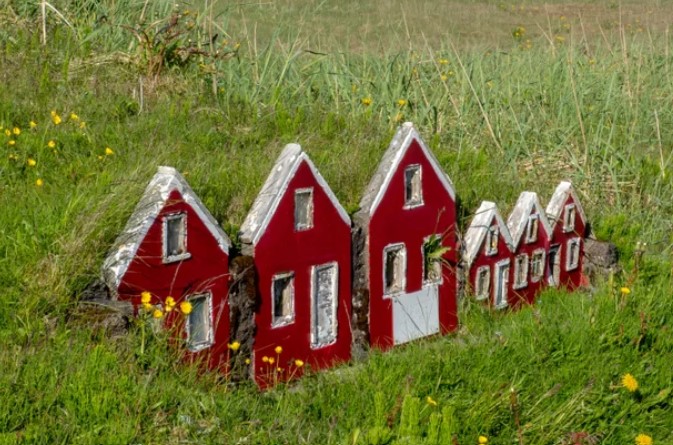
In any case, it doesn’t pay to annoy the Hidden Folk. They are known to be vindictive and there are plenty of stories of them taking revenge on humans that have wronged them.
Trolls
According to Icelandic folklore, trolls lived in the mountains and only came down from them to forage for food. Trolls can only survive in the darkness of night (guess they just stayed home for the endless daylight in summer then) and if they were caught in the sunlight they would immediately turn to stone.
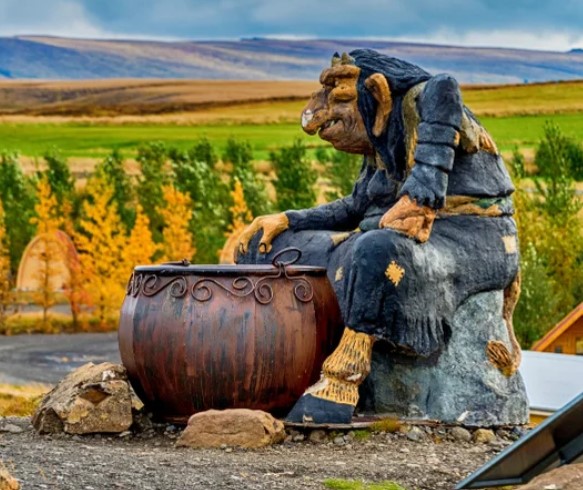
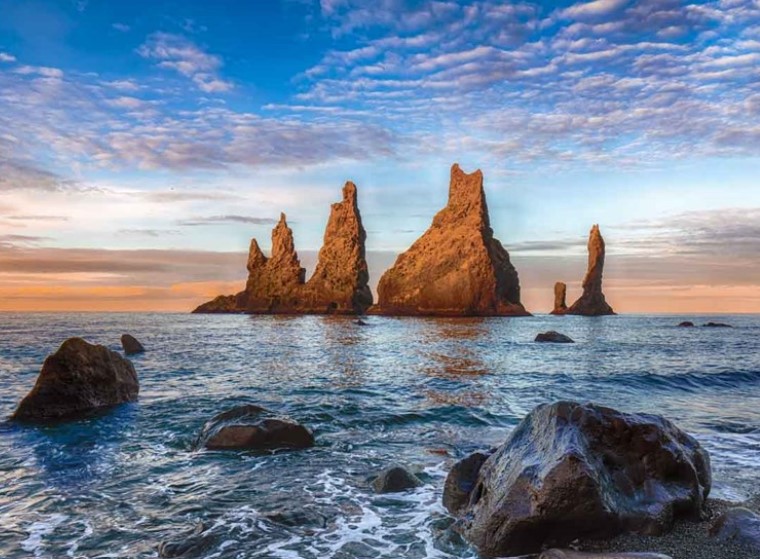
A few of these unlucky trolls can be seen all over the country, the most famous of which are the Reynisdrangar rock formations on the south shore. Legend has it that two trolls were trying to drag a three-mast ship to shore when the day broke and they were turned to stone.
The legend goes that Hvítserkur is a petrified troll. that lived in the Wesfjords but wanted to tear down the bells at the local convent. Icelandic trolls don’t like the sound or sight of churches or church bells. But the troll got caught by the first rays of the sun was turned to stone by daylight.
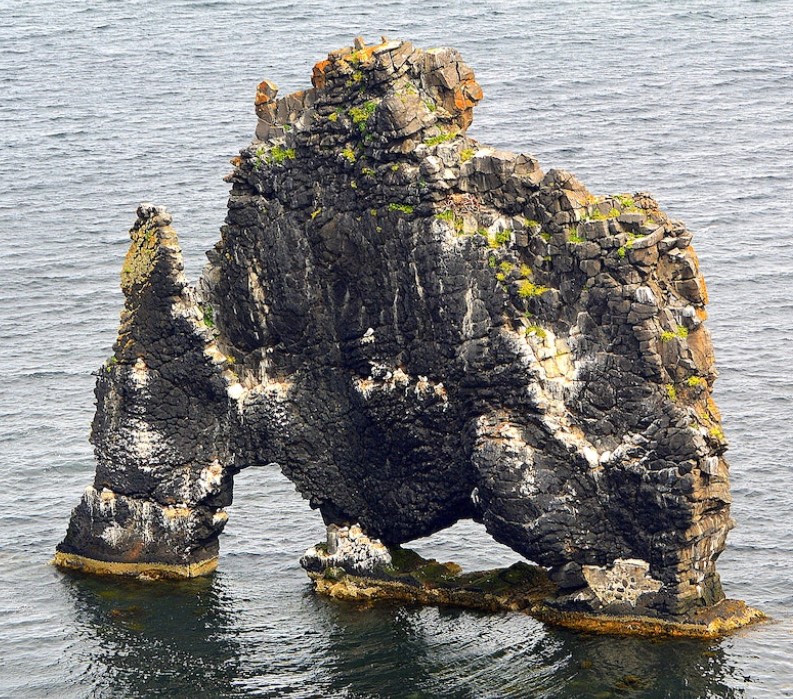
Other Creatures
Iceland also has its fair share of monsters and mysterious creatures.
The Lagarfljótsormur in Lagarfljót in Egilsstaðir is thought by many to be the cousin to Nessie in Scotland. Stories of this giant underwater worm-creature have been around since 1345 and it has been spotted as recently as 2012.
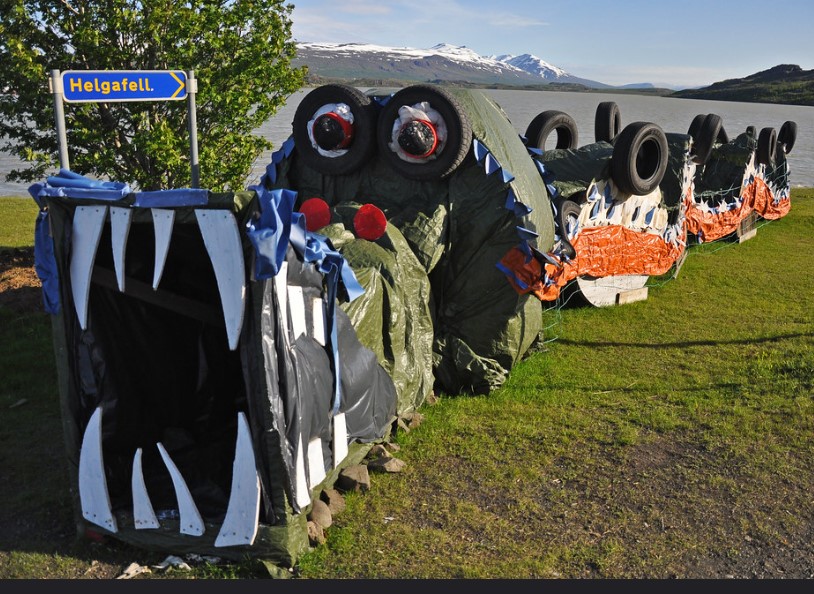
It is said to have grown from a small ‘heath worm’ placed on top of a gold ring by a local girl in order to guard it. When the girl returned to check on her ring the worm had grown so big that she threw it and the ring in the water where it continued to grow and hoard gold.
The Nykur sea horse is also a popular myth. The Nykur is usually found in lakes and rivers and it looks almost like a regular horse, except its hooves are backwards and it’s usually gray. The Nykur will try and get you to ride it but once you do it will run straight back to its lake or river and drown you.
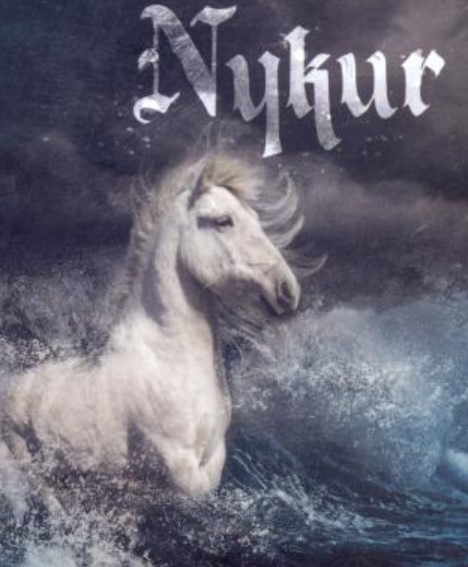
The name Móri is often given to Icelandic poltergeists. The Móri is a male ghost and usually haunts the same family for generations. The female ghosts are known as Skotta. Another famous ghost is Gunna, who wreaked havoc all over the Reykjanes peninsula until she was defeated by the wizard Eirikur frá Vogsosum and confined to the angry, bubbling hot spring Gunnuhver.